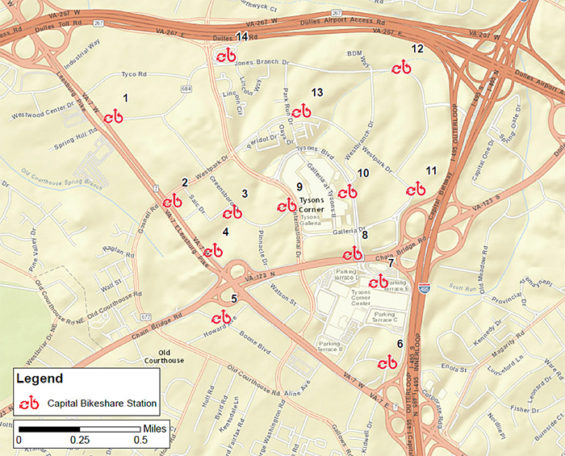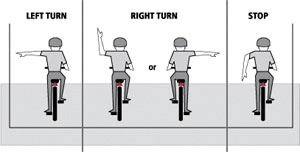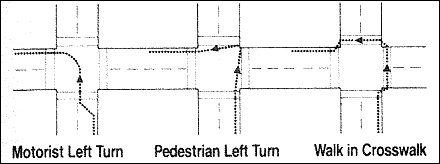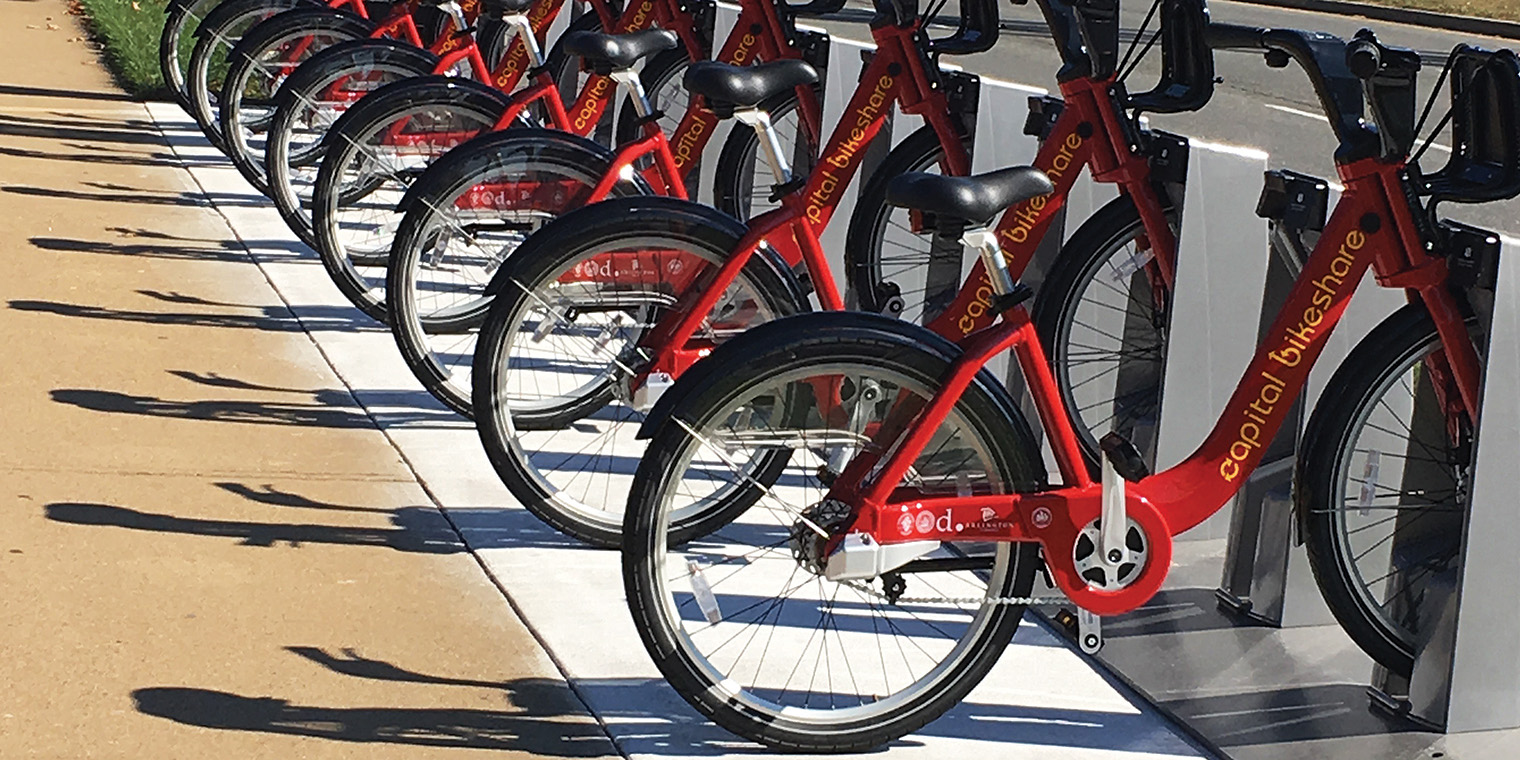With the advent of car sharing companies like Zipcar and ride services such as Uber and Lyft, travelers these days have many options for getting around besides driving their own cars. Tysons and Reston residents, employees, and visitors now have another option for navigating the often congested traffic in Tysons; Capital Bikeshare, otherwise known as CaBi.
Working with Tysons Partnership, Fairfax County has installed 14 bike stations in Tysons that will contain a total of 80 bikes (see Tysons bikeshare location map). You’re able to check out a bike, ride to nearby destinations, and return the bike to any of the stations, most of which are north of Route 7 and west of Route 123. Bike stations are also located near the four Tysons Metro stations (see station map).
How does it work? In order to use a bike you must first become a member. Among the many options are: 24-hour ($8), 3-day ($17), 30-day ($28), or Annual ($85). CaBi is also experimenting with a $2 single-use option. Using your member key or number you can check out a bike from any CaBi station. All rides lasting under 30 minutes are free, and it’s possible to ride to most destinations in Tysons in that time.
Bicyclists can either ride on the road, riding on the right with the flow of traffic, or on the sidewalk. When riding on the sidewalk cyclists should always ride slow, yield to pedestrians, and give them an audible signal before passing. See the VDOT Laws & Safety Tips page for more information.
Existing Capital Bikeshare members can use bikes under their current membership. Helmets are not required. The closest CaBi stations to Tysons are in Arlington, about 8 miles away, and Reston, about 7 miles away, so it is possible to connect with the larger CaBi system but it will probably take more than 30 minutes to make the trip.
Biking in Tysons can be a challenge, but conditions are improving. Last summer VDOT, working with Fairfax County, installed new bike lanes and shared lane markings on the following roads:

- Greensboro Drive: From International Drive to Spring Hill Road
- Westbranch Drive: From Jones Branch Drive to Westpark Drive
- Westpark Drive: From International Drive to Jones Branch Drive
- Park Run Drive: From Jones Branch Drive to Westpark Drive
- Jones Branch Drive: From Westpark Drive to 495 HOT lanes bridge
Now you have another option for navigating around Tysons. Instead of getting in your car to travel a few congested blocks at lunchtime, for a small membership fee you’re able to hop on a CaBi bike to get around.
Where to Ride
Bicyclists must ride with the flow of traffic on the right side of the highway.
Bicyclists operating a bicycle on a roadway at less than the normal speed of traffic at the time and place under conditions then existing shall ride as close as safely practicable to the right curb or edge of roadway. Exceptions to this are when bicyclists are overtaking and passing another vehicle proceeding in the same direction, preparing for a left turn, avoiding unsafe conditions, avoiding riding in a lane that turns or diverges to the right, riding on a one way street where bicyclists may ride as near the left-hand curb or edge of roadway, or when the lane width is too narrow to share with a motor vehicle. Additionally, bicycles are not excluded from riding on the highway shoulder.
Bicyclists must not ride between two lanes of traffic moving in the same direction unless one lane is a separate or mandatory turn lane.
Bicyclists cannot ride more than two abreast on highways. When riding two abreast, bicyclists cannot impede the movement of traffic and need to move into a single file when being overtaken from the rear. On a laned roadway, bicyclists shall ride in a single lane.
Bicyclists are not permitted to ride on interstate and certain controlled access highways, unless the operation is limited to bicycle or pedestrian facilities that are barrier separated from the roadway and automobile traffic. The restricted sections of the highways are marked with conspicuous signs.
Bicycles may be ridden on sidewalks unless prohibited by local ordinance or traffic control devices. While on sidewalks and shared use paths, bicyclists must always yield the right of way to pedestrians and give an audible signal before passing a pedestrian.
Bicyclists pulling onto a sidewalk or highway from a driveway must yield the right of way to pedestrians or vehicles already on the sidewalk or highway.
Changing Directions
Bicyclists must signal their intentions to stop or turn. The proper signals are made with the left arm as follows:

A right turn may be signaled with the right arm. The signals do not have to be given continuously if both hands are needed to control the bicycle.
Bicyclists may make left turns as either motorists or pedestrians do. To make a pedestrian left turn, the bicyclist should continue straight across the intersecting road, obey the traffic signals, turn left at the corner, and proceed as usual. Bicyclists have the option of either riding or dismounting and walking in the crosswalks of the two intersecting roads. If traffic control devices specify the method of crossings, these directions must be followed. Please refer to the examples shown here:







